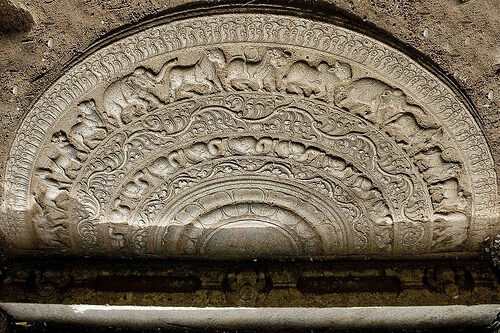The world around King Devanampiyatissa (247 BCE to 207 BCE)
In the above commentary we came across Emperor Asoka of the Mauryan dynasty that ruled much of the landmass known as India today. The 3rd century BCE starts on the first day of 300 BCE and ends on the last day of 201 BCE. It is considered part of the Classical era, epoch, or historical period.
Emperor Asoka reigned during 265–238 BCE in India. After the Mauryan Empire fell, no one major power held control over a substantial part of India for five hundred years. Rather, from circa 200 BCE onwards, India saw a fairly rapid turnover of numerous, regional kingdoms. Some of these were located in northern India, along the Ganges River, but others grew up in the south—the Indian Peninsula—for the first time. Also, some kingdoms emerged through foreign conquest. Outsiders in Central Asia and the Middle East saw India as a place of much wealth, and sought to plunder or rule it. Thus, throughout its history, India was repeatedly invaded by conquerors coming through mountain passes in the northwest. Many of these, like King Kanishka of the Kushan Empire (circa 100 CE), established notable kingdoms that extended from India into these neighbouring regions from which they came.
After the Gupta Empire, and during the following seven centuries, the pattern of fragmentation intensified, as numerous regional kingdoms large and small frequently turned over. Confronting such an unstable and fluid political scene, mediaeval kings granted land to loyal subordinate rulers and high officers of their courts. The resulting political and economic pattern is referred to as Indian feudalism. Also, kings put their greatness on display by waging war and building magnificent Hindu temples in their capital cities. And, during the mediaeval period, a new political and religious force entered the Indian scene, when Muslim Arab and Turkic traders and conquerors arrived on the subcontinent. After 300 BCE and up to the fifteenth century, India was never again unified for any length of time by one large empire.
Europe too was no stranger to this period. From early 400 BCE, the Celts of present-day France entered an expansionist phase, raiding and migrating down into Italy. They destroyed several Etruscan city-states in northern Italy and famously sacked Rome, at that time a city-state of only local importance, before being turned back. They then settled in the Po valley of northern Italy, which for a couple of centuries reverted – culturally at least – from being within the Mediterranean city-state zone of Europe to being in the temperate tribal zone.
Another branch of Celts migrated south-east towards the Balkans and Greece. In 279 BCE these groups ransacked Macedonia and Greece. One group then crossed into Asia Minor, where they would eventually be contained in a region of Anatolia which later became known as Galatia.
By 300 BCE, the city-state of Rome had come to dominate central Italy. In the following decades she brought the Etruscan cities under her control, and in southern Italy, her hard-won conquest of the Apennine hill tribes put her in a position to threaten the independence of the Greek cities there. From that moment on, all the great Mediterranean powers took it in turns to oppose Rome. First, the Greek cities of southern Italy called in one of the great generals of the day, Pyrrhus, king of Epirus, to see off the Romans. He failed, and left Italy advising the Greek cities to come to terms with Rome. This they did.
Then the leading city of Sicily, Syracuse, called on their historic foes, the Carthaginians, to resist Roman power. This led to two great wars between Carthage and Rome (the Punic Wars). The second of these saw the dramatic invasion of Italy by the Carthaginian general Hannibal, and the near-destruction of Roman power. The wars finally ended in 202 BCE, in a decisive victory for the Romans.
Her victory over Carthage gave Rome unchallenged leadership in the western Mediterranean, a position which she would use to extend her power inland into Spain and France. Meanwhile, in the east, the conquests of Alexander the Great had been divided between his leading generals, who had each founded a powerful kingdom. Three dominated the eastern Mediterranean – Macedonia, Syria and Egypt.
In the Middle East, from the 540 BCE, the victorious Persians established the largest empire yet seen in human history (and the largest, in terms of area, in the Ancient World).
Persian rule was comparatively mild, and unlike their predecessors, they left local peoples and their cultures in place. Indeed, they actually encouraged the resettlement of the exiled Jews back in their homeland around Jerusalem.
By Ramanie de Zoysa (CA) – Gold Coast








